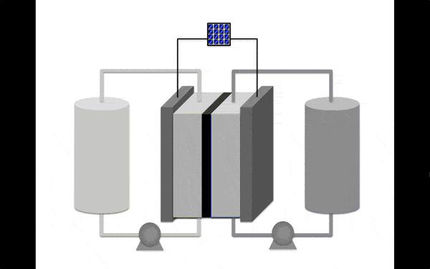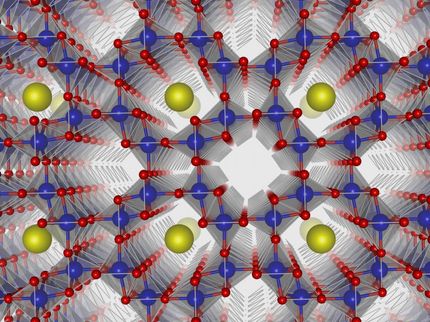A seaweed derivative could be just what lithium-sulfur batteries need
Lithium-sulfur batteries have great potential as a low-cost, high-energy, energy source for both vehicle and grid applications. However, they suffer from significant capacity fading. Now scientists from the Department of Energy's Lawrence Berkeley National Laboratory (Berkeley Lab) have made a surprising discovery that could fix this problem.
In research led by Gao Liu, the team unexpectedly found that carrageenan, a seaweed derivative, acts as a stabilizer in lithium-sulfur batteries. Better stability allows for more cycling and an extended lifetime.
"There's a lot of demand for energy storage, but there's very little chemistry that can meet the cost target," said Liu, the corresponding author of the paper. "Sulfur is a very low-cost material--it's practically free. And the energy capacity is much higher than that of lithium-ion. So lithium-sulfur is one chemistry that can potentially meet the target."
Rechargeable lithium-sulfur batteries have some limited commercial applications currently, but the "critical killer" in the chemistry is that the sulfur starts to dissolve, creating what is called the polysulfide shuttling effect. In trying to address this problem, Liu was experimenting with the binder, which is the substance that holds all the active materials in a battery cell together.
"A binder is like glue, and normally battery designers want a glue that is inert," Liu said. "This binder we tried worked really well. We asked why, and we discovered it's reacting¬--it reacted immediately with the polysulfide. It formed a covalent bonding structure."
By chemically reacting with the sulfur, the binder was able to stop it from dissolving. Once the researchers figured that out, they looked around for a naturally occurring material that would do the same thing. They landed upon carrageenan, a substance extracted from red seaweeds and in the same functional group (or group of atoms, with similar chemical reactivity) as the synthetic polymer they used in their initial experiments.
"We looked for something that was economical and readily available," Liu said. "It turns out carrageenan is used as a food thickener. And it actually worked just as well as the synthetic polymer--it worked as a glue and it immobilized the polysulfide, making a really stable electrode."
Visualizing in situ reactions
Liu worked with Jinghua Guo of Berkeley Lab's Advanced Light Source, one of the world's brightest sources of ultraviolet and soft X-ray beams, to make his discovery.
"The light source provides unique X-ray based tools," Guo said. "We want the tool to monitor the electrochemistry simultaneously while the battery is charging. In this case, we made a dedicated battery cell with the materials, then used X-rays to monitor the process under in situ conditions."
Liu added: "You can't do this kind of experiment anywhere else. In this case we have a unique beamline to detect sulfur. It's always a lot of effort to design the tool for in situ. Ex situ is easy, but in this case, ex situ didn't give you the result. With the in situ cell, we were able to watch where the sulfur goes. Turns out, it doesn't go anywhere. That was really cool."
General Motors, an industry research partner of Berkeley Lab's Energy Storage & Distributed Resources Division, confirmed Liu's research findings. "They independently tested it and saw the same effect we saw--in fact the stability was even better," Liu said.
Radical departure
The results open up an entirely new way of thinking about battery chemistry, Liu noted. "Scientifically, it's a totally different concept, of a binder that is reactive rather than inert," he said. "People don't think that way. They think a binder's function is to physically hold things together. We found, no, we need a way to chemically bind the polysulfide."
Liu and his group have been working on lithium-sulfur batteries for several years. They published a paper in Nano Letters last year on a novel lithium-sulfur electrode structure based on nature's own superefficient ant nest.
With this breakthrough to stabilize lithium-sulfur batteries¬ Liu is now seeking to improve the lifetime of lithium-sulfur batteries even further. "We want to get to thousands of cycles," he said.
Lithium-sulfur batteries have more than twice the energy density of lithium-ion batteries, which now dominate the market. They are also much more lightweight so they have potential application in airplanes and drones. In fact, lithium-sulfur batteries provided nighttime power in the record-setting 14-day solar-powered flight of the Zephyr, an unmanned aircraft, in 2010.
Liu, Guo, and their team will continue to work on understanding the chemical reactions in the cell. "After this polymer binds with sulfur, what happens next? How does it react with sulfur, and is it reversible?" Liu said. "Understanding that will allow us to be able to develop better ways to further improve the life of lithium-sulfur batteries."
Original publication
Other news from the department science
These products might interest you
Most read news
More news from our other portals
See the theme worlds for related content
Topic World Battery Technology
The topic world Battery Technology combines relevant knowledge in a unique way. Here you will find everything about suppliers and their products, webinars, white papers, catalogs and brochures.

Topic World Battery Technology
The topic world Battery Technology combines relevant knowledge in a unique way. Here you will find everything about suppliers and their products, webinars, white papers, catalogs and brochures.





























































